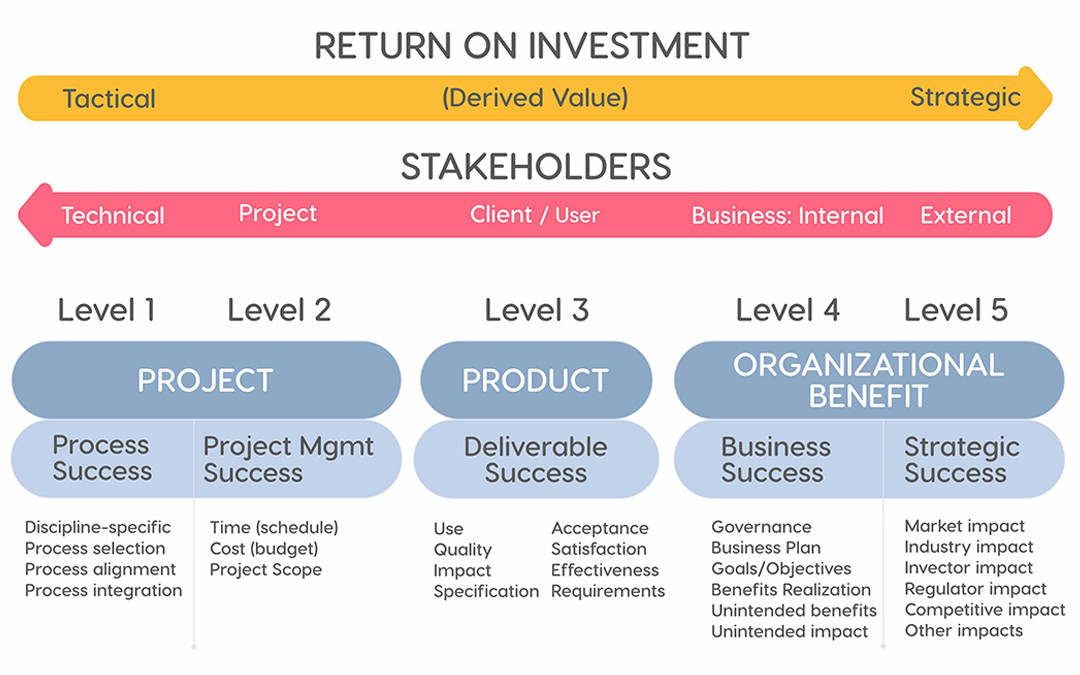Successful project delivery is the main goal of project management efforts, but what does project success really mean? Delivering a project on time and within budget, you may think. Yes, but that’s not enough. If you want your initiative to be successful, it’s a good idea to determine what success will look like for this particular project.
In aerospace and defense projects, there should be no room for ambiguity regarding the desired outcomes. So it’s reasonable to determine the expected deliverable as accurately as possible right away.
This is where project success criteria come into play. Read the article to learn more about these criteria, and which of them should be applied to assess the success of aerospace and defense projects.
Project Success Criteria: Definition and Importance
First off, let’s clear up the definition of project success criteria: they are “the standards by which the project will be judged at the end to decide whether or not it has been successful in the eyes of the stakeholders” [1]. In other words, these criteria determine if a project meets the expectations and requirements established at the beginning of its implementation, and if its outcomes satisfy customers/clients, the project team, and company executives.
Why define project success criteria?
You may think that when a project is completed, it’s clear for everyone if it has been successful or not. But the thing is that the concept of a successful project is rather blurred, so every project participant may interpret it differently. For example, a project manager may consider a project to be successful when it’s completed without a delay and budget overrun. At the same time, customers who want the developed product to meet their requirements to the full may turn a blind eye to a project delay and/or cost overrun if it’s necessary to deliver the product they need. Finally, these criteria will be different depending on the industry, company, and project goals.
Let’s explore the additional benefits of determining project success criteria.
- All the parties involved in a project will have clear expectations of project outcomes.
- Defining project success criteria makes it possible to track a team’s progress towards the end goal.
- Understanding the success criteria makes it easier to recognize possible threats to the project flow and in such a way minimize risks.
- Determining project success criteria increases interaction between the project team and other stakeholders.
- Project success criteria can be used to analyze what working practices should be improved in the future. [2]
To sum up, defining the criteria for project success at the beginning will increase chances for better project outcomes at the end.
The importance of defining success criteria for aerospace and defense projects
First, it should be mentioned that projects in this domain are affected by certain industry-specific trends and challenges, e.g., intensive digitalization, uncertain geopolitical and business environments, increasing number of orders, etc. From this, we can characterize aerospace and defense projects as follows.
- They are mostly large and complex.
- They involve the application of innovative technologies, which creates additional risks and challenges.
- They are vulnerable to risks, including cyberthreats.
- They are guided by government regulations and must strictly comply with them.
- They are characterized by talent challenges and lack of necessary resources.
These factors will inevitably affect both the workflow and the final outcome of a project, so, it’s better to agree with all the stakeholders on what it’s expected to achieve. The criteria for defining project success must be as precise as possible, which will contribute to better predictability of project outcomes, set the right direction for the project work as well as make it possible to analyze lessons learned to improve future projects.
Defining Project Success Criteria in Aerospace and Defense

There are several approaches to determining what standards should be regarded as success criteria. For example, as stated in PMBOK Guide, the success of a project is measured in terms of completing it within the constraints of scope, time, cost, quality, resources, and risk.
According to the other approach [1], project success criteria are divided into two categories:
- Project management success criteria that show efficiency of the project management process itself.
- Project deliverable success criteria that describe the success of a product/services delivered as a result of a project.
Speaking about complex aerospace and defense projects, these criteria can be not enough for the adequate assessment of project success in this domain. For this reason, we’d like to dwell upon a more detailed approach to defining success criteria – a multilevel project success framework [3]. Let’s explore it in more detail in the subsection below.
A multilevel project success framework: a comprehensive approach to defining success
The framework embraces five levels of performance criteria that make it possible to assess a project from several stakeholder perspectives at different times after the project closeout. According to it, you can define project success by the highest level of benefit that can be achieved by a project at any point of reflection. The framework covers three main areas of focus:
- the project itself (effectiveness of the processes),
- the product (or the main deliverable of the project),
- organizational benefits (achievement of business objectives, etc.).
These three milestones are divided between 5 levels to help define project success. The framework is represented in the picture below.

Let’s overview each level of the framework.
Level 1. Process success
Determining success at this level involves assessing the adequacy of the processes applied during the work on a project, their alignment with the project goals, and effectiveness for achieving desirable project outcomes. Analysis at this level provides feedback to the project team and makes it possible to use the lessons learned to improve future projects. Success at this level means that technical and managerial processes were:
- chosen appropriately for the purpose,
- aligned with the project objectives,
- integrated with each other,
- effectively implemented.
Level 2. Project management success
This level covers typical project management success criteria: cost/budget, scope (namely project, not product scope), and time/schedule. Accordingly, success at this level means that the budget hasn’t been exceeded, the scope has been fully implemented, and project due dates haven’t been missed.
Level 3. Product success
Criteria belonging to this level refer to the product or services being delivered. As a rule, they describe both the deliverable (if it meets the requirements, specifications, and quality expectations) and customer/user satisfaction (e.g., effectiveness of the product).
Level 4. Business success
This level relates to net benefits that an organization gains from the project. It describes the degree to which the project has met the goals and objectives that motivated the investment approval and if the expected business benefits are realized. In addition, assessment of net benefits includes both unintended benefits and negative impacts arising from the investment.
Level 5. Strategic success
This level involves the assessment of organizational benefits by external stakeholders (e.g., investors, competitors, industry analysts, etc.). Strategic success is determined by business growth and development, a company’s competitive advantage, and/or other strategic gain.
As we can see, the multilevel project success framework offers a comprehensive approach to defining project success, which makes it possible to get a broad overview of its outcomes from different stakeholder perspectives. Such an approach is especially relevant for large-scale complex projects like those running in the aerospace and defense industry.
Key Takeaways
Let’s summarize the most important points of the article.
- Project success criteria are the standards used to decide whether the project has been successful in the eyes of stakeholders.
- It’s important to define these criteria at the beginning, as the concept of “a successful project” can be interpreted in different ways and cause misunderstandings.
- Precise definition of success criteria in aerospace and defense projects will set the right direction for project work and contribute to better predictability of its outcomes.
- Traditionally, project success criteria refer to a project’s scope, time, budget, and quality of the deliverable. However, aerospace and defense projects are characterized by greater complexity, so they require a more detailed approach to defining success.
- A multilevel project success framework implies a comprehensive approach to defining project success, which makes it relevant for aerospace and defense projects. The framework embraces five levels of success criteria: process, project management, product, business, and strategic success.
References
- Harrin, Elizabeth. (2022). The Definitive Guide to Project Success Criteria.
- 7 Project Success Criteria Examples (Plus Definition and Benefits). (2021)
- Bannerman, P. L. (2008). Defining project success: a multilevel framework. Paper presented at PMI® Research Conference: Defining the Future of Project Management, Warsaw, Poland. Newtown Square, PA: Project Management Institute. Retrieved from: https://www.pmi.org/learning/library/defining-project-success-multilevel-framework-7096

